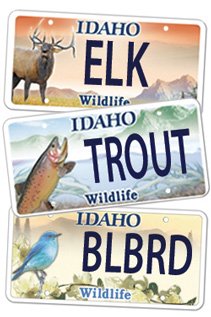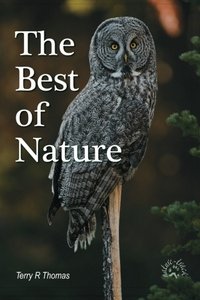Responding to Wild Animal Attacks

Photo copyright Terry r. Thomas.
Cougars, a.k.a., mountain lions, are apex predators and humans can be on the menu. How should you defend against a cougar attack?
It was a chilling video. A jogger on a trail near Provo, Utah, happened upon a female cougar and her very young kittens. Mama, fearing for the safety of the little ones, was immediately aggressive to the jogger, hissing and jumping toward him, claws out and hackles raised, each time he stopped. Since he was doing the filming himself, I don’t know how worried he was, but the jogger finally picked up a rock, despite the cougar’s aggressive false charge, and with one toss convinced her to go back to her babies.
Not everyone is so lucky. Just last spring, two California brothers were attacked by a healthy male cougar and one of them perished. In 2024 as well, a cyclist was attacked by a cougar in Washington state and saved when fellow cyclists pinned the cougar down with their bikes. In 2018, another Washington cyclist was killed by a cougar, and in 2023 a child was attacked in Olympic National Park.
Wild animal attacks are not common—one Washington official stated that to be attacked by a cougar was a thousand times less likely than to be struck by lightning—but it can happen. And, it is not just the apex predators we should be concerned about. About ten years ago I read of a fisherman who was attacked by a beaver as he waded in a pond. The beaver severed his femoral artery in a single bite, killing him. And just last year there was the story of a of kayakers on the Yellowstone River somewhere near Livingston, Montana, who were attacked, and two were severely mauled, by a group of otters.
Most of the time, keeping a respectful distance will negate any issues, but this is not always possible. A bend in a trail or river may be all it takes to put us into a deadly encounter.
So, if you and an animal are danger-close and things go south, what should you do? In most cases, do not turn and run. This triggers an automatic chase response in predators and you cannot outrun most other animals. If shelter, such as a car, is very close, that might be an option, but you had better be sure you can make it.
Stand and fight is the best option in most cases. Having been sprayed with the human version of bear spray and having had to use it on a dog once, I am a big proponent of bear spray, not just for bears, but for any wild, feral, or domestic animal. It is powerful, easily deployed, and lightweight to carry. You do have to be careful not to get a dose of it yourself, but I cannot imagine a case where it would not distract an animal or even a pack of them.
If you do not have bear spray, predators intent on making a meal of you (black bears, cougars, wolves, coyotes) usually respond to aggressiveness on your part. Raise your arms to look larger, yell, wave a jacket at them, even advance and you may convince them that you are not a likely candidate as a dinner companion. If there is more than one animal, keep your back protected if you can so you do not have to fight on two fronts. Anything you have can be used as a weapon—hiking sticks, day pack, a length of rope, rocks, sticks, or as in the story above, even a bicycle, can be used to keep the animal at bay.
If the animal is a large ungulate such as a moose, elk, or even a deer, back off quickly if you can, and get something between you and the animal. I have had to play ring around the pine tree with a bull elk before and it worked until I was able to dive under a fallen tree and he lost interest. If you can get into a tree above them that works too.
Beavers and otters are highly mobile in the water, but on land they are relatively slow and the average human can outrun them. That is not so for the badger, which can sprint at almost 20 mph. If a badger is coming for me, I would hope I have my bear spray or a pistol.
If the animal is a grizzly bear, the current wisdom is still to play dead and do not fight if bear spray doesn’t work. Often grizzlies just want to stop a threat and their response is not predatory. Once you are no longer a risk, it may leave you alone.
When you enter to woods, do not be afraid of animal attacks, but be prepared. Common sense and bear spray (and perhaps a small pistol would be on my hip) will be your best defenses.
Help Idaho Wildlife
When we traveled across the state in October 2017, we visited most of the Idaho Department of Fish and Game wildlife management areas. Most of the vehicles we saw using the wildlife management areas did not have wildlife plates. Buying wildlife plates is a great way for non-hunters and hunters alike to support wildlife-based recreation like birding.
C'mon folks, let's help Idaho's wildlife by proudly buying and displaying a wildlife license plate on each of our vehicles!
See below for information on Idaho plates. Most states have wildlife plates so if you live outside Idaho, check with your state's wildlife department or vehicle licensing division for availability of state wildlife plates where you live.
And tell them that you heard about it from Nature-track.com!

Wildlife License Plates
Great news! as of 2024, there are three NEW designs for license plates. They still are bluebird, cutthroat trout and elk, but they are beautiful.
Idaho Wildlife license plates provide essential funding that benefits the great diversity of native plants and wildlife that are not hunted, fished or trapped—over 10,000 species or 98% of Idaho’s species diversity. Game species that share the same habitats (such as elk, deer, antelope, sage-grouse, salmon, trout) also benefit from these specialty plates.
No state tax dollars are provided for wildlife diversity, conservation education and recreation programs. Neither are any revenues from the sale of hunting or fishing licenses spent on nongame species. Instead, these species depend on direct donations, federal grants, fundraising initiatives—and the Idaho Wildlife license plates.
Both my vehicles have Bluebird Plates. I prefer the bluebird because the nongame program gets 70 percent of the money from bluebird plates, but only 60 percent of the money from elk and trout plates - 10 percent of the money from elk plates supports wildlife disease monitoring and testing programs (to benefit the livestock industry) and 10 percent from cutthroat plates supports non-motorized boat access.
Incidentally, in 2014, the Idaho Legislature denied the Department of Fish and Game the ability to add new plates or even to change the name of the elk and cutthroat plates (very specific) to wildlife and fish plates, a move that would have allowed for changing images occasionally and generating more revenue. It would seem that they believe that we Idahoans don't want a well funded wildlife program.
I think it is time we let the Legislature know that Idahoan support wildlife funding and that we would like to see these generic plates come to fruition.

"WOW. What a phenomenal piece you wrote. You are amazing." Jennifer Jackson
That is embarrassing, but actually a fairly typical response to my nature essays. Since The Best of Nature is created from the very best of 16 years of these nature essays published weekly in the Idaho Falls Post Register (online readership 70,000), it is a fine read. It covers a wide variety of topics including humorous glimpses of nature, philosophy, natural history, and conservation. Readers praise the style, breadth of subject matter and my ability to communicate complex and emotional topics in a relaxed and understandable manner.
Everyone can find something to love in this book. From teenagers to octogenarians, from the coffee shop to the school room, these nature essays are widely read and enjoyed.
Some of the essays here are my personal favorites, others seemed to strike a chord with readers. Most have an important message or lesson that will resonate with you. They are written with a goal to simultaneously entertain and educate about the wonderful workings of nature. Some will make you laugh out loud and others will bring a tear to the eye and warm your heart.
Readers Write:
"You hit a home run with your article on, Big Questions in Nature. It should be required reading for everyone who has lost touch with nature...great job!" Joe Chapman
"We enjoyed your column, Bloom Where Planted. Some of the best writing yet. The Post Register is fortunate to have your weekly columns." Lou Griffin.
To read more and to order a copy, click here or get the Kindle version
Copies are also available at:
Post Register
Island Park Builders Supply (upstairs)
Barnes and Noble in Idaho Falls
Harriman State Park, Island Park
Museum of Idaho
Valley Books, Jackson Wyoming
Avocet Corner Bookstore, Bear River National Wildlife Refuge, Brigham City, Utah
Craters of the Moon National Monument Bookstore, Arco, Idaho